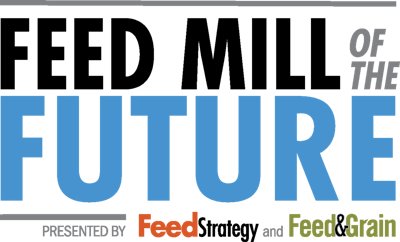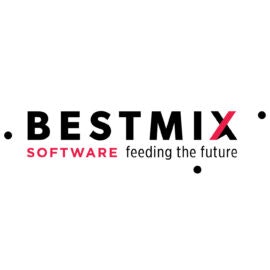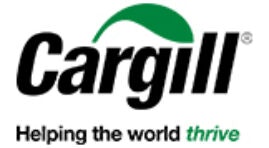Transcript of Feed & Grain Chat with Ryan Lane, president of ADM, Animal Nutrition North America.
Elise Schafer: Hi everyone and welcome to Feed & Grain Chat. I'm your host Elise Schafer, editor of Feed & Grain. This edition of Feed & Grain Chat is brought to you by WATT Global Media and feedandgrain.com. Feedandgrain.com is your source for the latest news, product and equipment information for the grain handling and feed manufacturing industries.
Today I'm joined on Zoom by Ryan Lane, president of ADM Animal Nutrition North America. He's here to discuss ways the feed industry is helping reduce carbon emissions from the animal protein production supply chain.
When it comes to lifecycle assessments [LCAs], sourcing accurate feed data can be challenging. How does ADM get data for its feed and ingredient lifecycle assessments?
Ryan Lane: So, analyzing and mitigating a product's environmental footprint is an emerging field in a still developing framework, but to ensure everyone is on the same page in terms of using and tracking the same metrics, we do rely on standardized methodologies like PEFCR [Product environmental footprint category rules], ISO, and FAO LEAP [Livestock Environmental Assessment and Performance].
Last December, I'm happy to announce, we joined the Global Feed LCA Institute -- this is an independent organization that's developing a publicly available animal nutrition lifecycle analysis database to support meaningful environmental assessments of animal nutrition products.
So together with the underlying UN FAO LEAP-based methodology, this LCA database aims to be the reference for assessing and benchmarking feed industry impacts, as we have an improvement in LCA calculations moving forward. ADM recently obtained the first verified LCA results for one of our products known as XTRACT and this is a plant extract feed additive, and we've demonstrated effects on improving broiler performance.
Additional LCA efforts are in progress to assess our environmental impact of feed manufacturing in their applications in animal production. With the carbon footprint data we've received on the production of XTRACT, we can begin to identify areas for operational improvement and take action that will be useful for our downstream customers.
Schafer: What opportunities exist for ADM and other feed manufacturers who can effectively reduce their companies' carbon footprints?
Lane: Yeah, so when we look at the LCA, it’s a tool. It helps us quantify the environmental impact of two key phases of feed and additives: their manufacturing and their use by livestock. So, if we look at the first phase, this provides specific carbon footprint information that we can include on feed product labels and transparency to our customers, which includes producers of animals, integrators, and feed millers.
The second phase of the LCA assesses whether that target product can help the following: first, lower greenhouse gas emissions through the improvement of animal health; The second is optimization of animal performance, and/or third, the reduction of nutrient excretion into the environment. These metrics will grow increasingly valuable as animal production producers strive to reduce their carbon footprint and look for animal feed formulations to help them. Both phases of LCA can help stake holders identify where they can make improvements, but ultimately, changes across the value chain are required to achieve reduction targets. For instance, we can review manufacturing methods, alternative carriers or coding materials, and then implement measures to reduce our environmental outputs.
Schafer: We tend to focus a lot on climate and carbon when it comes to sustainability and feed. But ADM is a global company that impacts many people around the World. How does ADM’s sustainability objective also promote its social mission to enhance communities?
Lane: Great point, thanks for mentioning it! As a leader in human and animal nutrition, ADM is committed to playing our part within the global food system to serve the world's nutritional needs while reducing environmental impacts. LCA is one of many ways we're focusing on enhancing sustainability, including renewable product and process innovations, supply chain commitments and improving overall operational efficiency. Our ambitious Strive 35 plan targets energy use, greenhouse gas emissions, water use and waste management by 2035. We're dedicated to reducing our scope one, two and three greenhouse gas emissions by 25%, and this is against our 2019 baseline.
We're also committed to being 100% deforestation-free by 2025, which includes direct and indirect sourcing of all commodities. Additionally, we have committed to working with the Science-based Targets Initiatives with the aim of obtaining approval of our climate targets and alignment with global goals to limit rising temperatures to 1.5 degrees Celsius.
Furthermore, we do collaborate with peer organizations to contribute to the global conversation. ADM is a member of the Cool Farm Alliance, the Responsible Meat Initiative, the Global Roundtable of Sustainable Meat, the Greener Cattle Initiative, and other multi-stakeholder forums. The idea is the companies within these groups take a harmonious approach to make more impactful progress, including greenhouse gas emissions, water use, worker welfare and so on.
Change can’t happen in a silo. It will take all of us moving in the same direction to meet our sustainability goals. ADM’s efforts across human and animal nutrition are contributing to a more robust and sustainable global food system.
Schafer: Well, thank you so much for your insights today, Ryan. And if you're interested in the topics we discussed here today, consider joining us at Feed Mill of the Future Conference held at IPPE in Atlanta on January 24.
Ryan will be speaking there on a panel titled Feed’s Role in Animal Ag’s Path to Net-zero Carbon Emissions. For more information and to view the full program, visit feedmillofthefuture.com That's all for today's Feed & Grain Chat. Thank you for joining and we hope to see you next time!

Sponsored by:



= Event At-A-Glance =
How efficiency, innovation and sustainability will shape the feed industry of tomorrow
Co-located with IPPE 2023 | Atlanta, GA, USA
January 24, 2023 | 8 a.m. –Noon | Room B203
Fee: $95 early bird | $125 after Jan. 6, 2023
View the full agenda here: www.feedmillofthefuture.com
How to register: To attend the Feed Mill of the Future Conference, attendees must first register to attend IPPE. Register today for the lowest ticket price, go to www.ippexpo.org, and visit the “Education Programs” for details.
Ryan Lane, president of ADM Animal Nutrition, believes the entire animal protein supply chain must work together in order to achieve meaningful emissions reductions.
"Change can’t happen in a silo," Lane said. "It will take all of us moving in the same direction to meet our sustainability goals."
In this Feed & Grain Chat, Lane shares how ADM is navigating the developing framework for analyzing products' environmental footprints through collaboration with feed industry and other agriculture stakeholder organizations.
